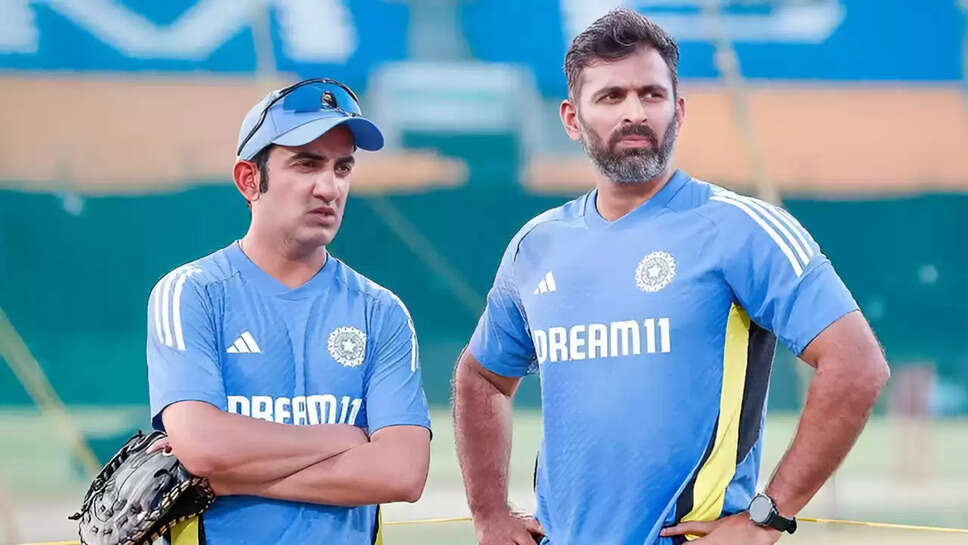Handle With Care: The Case for Managing Bumrah Like a National Asset

For cricket fans, Jasprit Bumrah is more than a fast bowler—he is a phenomenon. With a unique action, steely nerves, and an uncanny ability to strike at crucial moments, he has changed the face of Indian fast bowling. But brilliance often comes at a cost. Overuse, injury, and burnout loom large over athletes of Bumrah’s caliber. Recognizing this, a former Team India coach recently suggested a radical yet sensible strategy: treat Bumrah like a special weapon, not a soldier of the regular grind.
The ex-coach’s statement—calling for a “small team” to manage Bumrah and “prepare him for surgical strikes a few times a year”—has sparked wide discussion in Indian cricket circles. It’s not just about fitness; it’s about longevity, performance, and unlocking the most lethal version of Bumrah when it matters most.
The Bumrah Blueprint: Why Less Is More
Bumrah isn’t a bowler you bring in just to fill overs. He’s your strike weapon—the one you call when the game is on the line. But the kind of intensity and physical toll his action brings means his use must be measured.
Much like the world’s finest weapons, which are preserved and deployed with utmost care, Bumrah, too, needs a highly specialized regimen. Former coaches, trainers, and even senior players understand this. His recurring back injuries and time on the sidelines in recent years are reminders that India cannot afford to misuse its greatest pace asset.
The idea is simple: quality over quantity. Keep him fresh, sharp, and hungry. Deploy him in Tests that matter, tournaments with weight, and crunch moments that define careers. That’s where his real value lies.
Behind the Numbers: Bumrah's Impact in Short Bursts
It’s no coincidence that Bumrah’s most memorable spells have come in high-stakes moments—whether it's at Lord’s, Johannesburg, the T20 World Cup, or in the IPL playoffs. He thrives under pressure, with the ability to dismantle well-set batters and turn matches on their head.
His control, reverse swing, yorkers, slower balls, and mental edge make him more than just another pacer—he’s a disruptor.
India doesn’t need him playing every series against every opposition. Instead, the goal should be to build a program around him: monitoring workload, crafting match fitness programs, and ensuring he peaks when India needs him the most.
Small Team, Focused Role: A Tactical Model
What does it mean to assign a "small team" to Bumrah?
It means appointing a dedicated group of physios, strength trainers, mental coaches, and analysts whose sole purpose is to maintain Bumrah’s readiness. Think of it like Formula 1—where a single race car has an entire pit crew whose job is to ensure that when the moment comes, it delivers flawlessly.
Such a setup would ensure Bumrah isn’t treated like a general squad member rotating through the system. He becomes a strategic asset, with carefully curated game time and long-term planning.
Learning from the World’s Best
Other cricketing nations have adopted similar methods for their premium fast bowlers. Australia, for example, has managed the careers of Pat Cummins and Josh Hazlewood with a well-calibrated rotation policy. England has done the same with Jofra Archer and Mark Wood, choosing to prioritize major tournaments and crucial Test series over constant engagement.
India must follow suit—not because Bumrah is injury-prone, but because he is too valuable to risk.
The key difference, though, lies in India’s cricketing culture, which still leans heavily on its stars to appear in every series. Commercial interests, fan expectations, and media pressure often override logic. It’s time to break that pattern for the sake of career longevity.
Mental Health, Burnout, and Performance Cycles
Fast bowling isn’t just physical—it’s mental. The pressure of being India’s pace spearhead, combined with non-stop cricketing calendars, can wear down even the most elite athletes. A small, specialized team would also help Bumrah focus on recovery, recalibration, and mental composure—essential traits for a bowler expected to win matches in the dying overs or on unhelpful pitches.
Allowing him time off, both mentally and physically, could extend his prime by years.
Fan Sentiment vs Long-Term Goals
Many fans, understandably, want to see Bumrah bowl as often as possible. He’s thrilling, unpredictable, and often the highlight of any match he plays. But the broader goal should be to protect that very spark.
Would fans rather see Bumrah play 15 matches a year at 60% intensity, or 8 matches a year at 110% intensity—where he truly dominates?
The answer is obvious. And the BCCI must align its policies, selectors, and calendar around that vision.
IPL vs National Duty: The Tough Balancing Act
One recurring concern is Bumrah’s appearance in IPL despite missing international matches. While this raises eyebrows, it also underscores the need for transparent communication and strategic clarity. If a model exists where Bumrah is preserved for ICC events and series that shape rankings and rivalries, his IPL participation should be part of a larger ecosystem—not in conflict with it.
Managing this delicate balance will be critical. The goal should never be to pit franchise and country against each other, but to integrate both into a unified career strategy for key players like Bumrah.
The Future of Fast Bowling Management
Jasprit Bumrah represents the gold standard of Indian pace bowling. His unique talent, honed over years, must now be protected with equal care. Treating him like a “surgical strike” weapon may sound dramatic, but it’s the smartest and most sustainable approach.
The message from the former India coach is clear: protect your assets, sharpen your spear, and strike only when it truly matters.
Because when Bumrah fires on all cylinders, India doesn’t just compete—it dominates.
